
Construction materials company Vulcan Materials (NYSE:VMC) fell short of the market’s revenue expectations in Q1 CY2025, but sales rose 5.8% year on year to $1.63 billion. Its non-GAAP profit of $1 per share was 31.6% above analysts’ consensus estimates.
Is now the time to buy Vulcan Materials? Find out by accessing our full research report, it’s free.
Vulcan Materials (VMC) Q1 CY2025 Highlights:
- Revenue: $1.63 billion vs analyst estimates of $1.68 billion (5.8% year-on-year growth, 2.8% miss)
- Adjusted EPS: $1 vs analyst estimates of $0.76 (31.6% beat)
- Adjusted EBITDA: $411 million vs analyst estimates of $384.5 million (25.1% margin, 6.9% beat)
- EBITDA guidance for the full year is $2.45 billion at the midpoint, in line with analyst expectations
- Operating Margin: 13.9%, up from 11.2% in the same quarter last year
- Free Cash Flow Margin: 5.1%, up from 1.3% in the same quarter last year
- Tons Shipped: 47.8 million, in line with the same quarter last year
- Market Capitalization: $32.41 billion
Tom Hill, Vulcan Materials' Chairman and Chief Executive Officer, said, "The combination of our aggregates-led business and our consistent focus on our Vulcan Way of Selling and Vulcan Way of Operating disciplines resulted in strong earnings growth and margin expansion in the first quarter. Adjusted EBITDA increased 27 percent, and Adjusted EBITDA margin expanded 420 basis points over the prior year. Aggregates cash gross profit per ton improved 20 percent with widespread improvements across our footprint. Our commercial and operational execution support our full-year outlook to deliver another year of earnings growth in 2025. "
Company Overview
Founded in 1909, Vulcan Materials (NYSE:VMC) is a producer of construction aggregates, primarily crushed stone, sand, and gravel.
Sales Growth
A company’s long-term sales performance can indicate its overall quality. Any business can have short-term success, but a top-tier one grows for years. Over the last five years, Vulcan Materials grew its sales at a decent 8.5% compounded annual growth rate. Its growth was slightly above the average industrials company and shows its offerings resonate with customers.
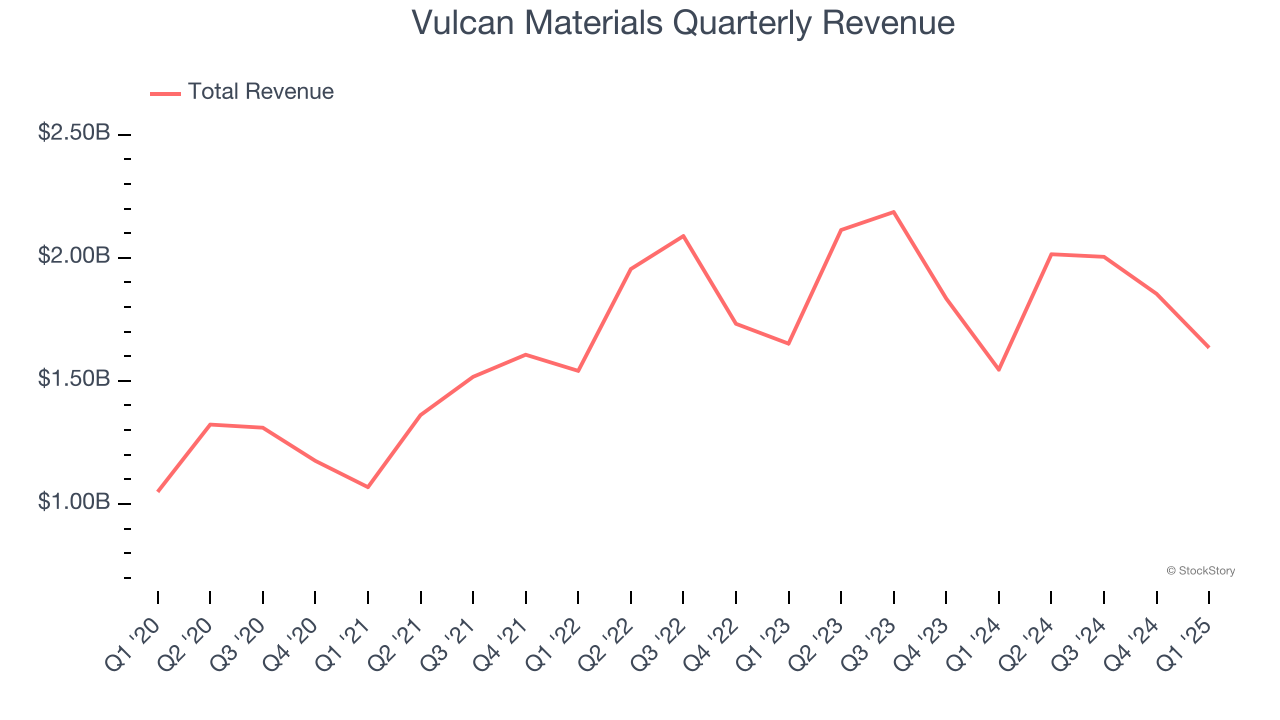
We at StockStory place the most emphasis on long-term growth, but within industrials, a half-decade historical view may miss cycles, industry trends, or a company capitalizing on catalysts such as a new contract win or a successful product line. Vulcan Materials’s recent performance shows its demand has slowed as its revenue was flat over the last two years. 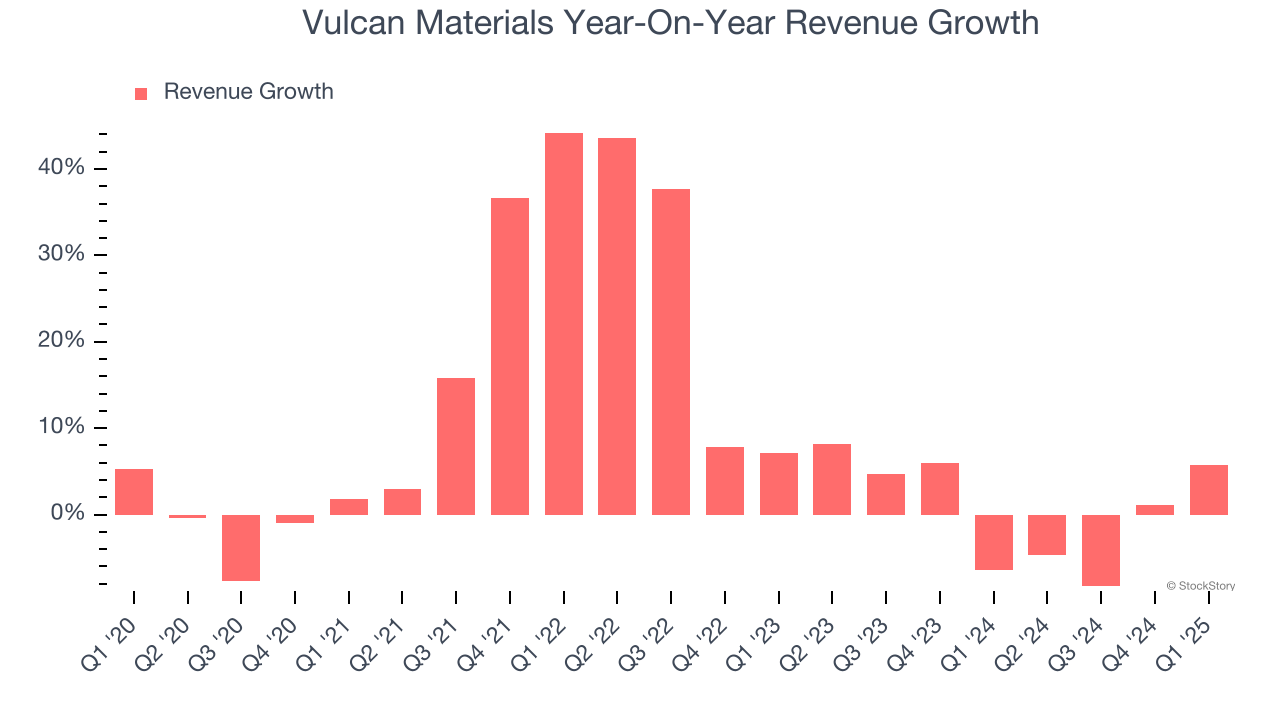
Vulcan Materials also discloses its number of tons shipped, which reached 47.8 million in the latest quarter. Over the last two years, Vulcan Materials’s tons shipped averaged 3.2% year-on-year declines. Because this number is lower than its revenue growth during the same period, we can see the company’s monetization has risen. 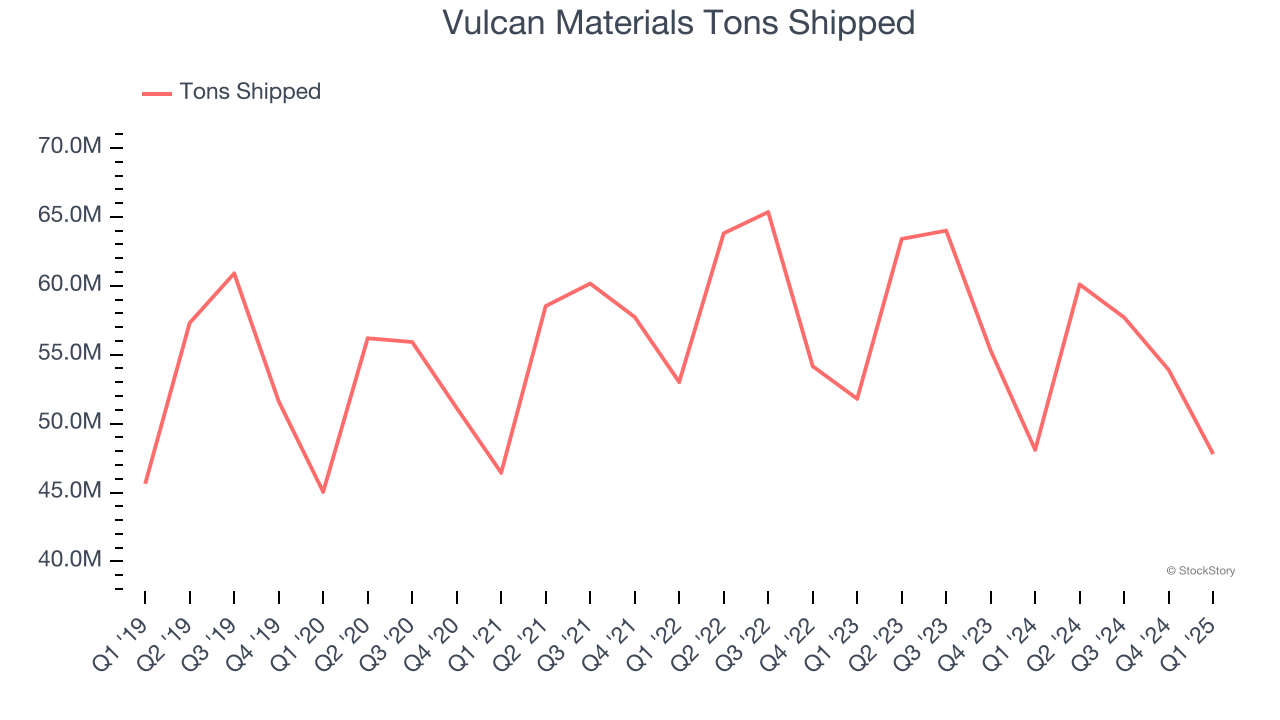
This quarter, Vulcan Materials’s revenue grew by 5.8% year on year to $1.63 billion, missing Wall Street’s estimates.
Looking ahead, sell-side analysts expect revenue to grow 11.2% over the next 12 months, an improvement versus the last two years. This projection is commendable and suggests its newer products and services will fuel better top-line performance.
Here at StockStory, we certainly understand the potential of thematic investing. Diverse winners from Microsoft (MSFT) to Alphabet (GOOG), Coca-Cola (KO) to Monster Beverage (MNST) could all have been identified as promising growth stories with a megatrend driving the growth. So, in that spirit, we’ve identified a relatively under-the-radar profitable growth stock benefiting from the rise of AI, available to you FREE via this link.
Operating Margin
Operating margin is one of the best measures of profitability because it tells us how much money a company takes home after procuring and manufacturing its products, marketing and selling those products, and most importantly, keeping them relevant through research and development.
Vulcan Materials has been a well-oiled machine over the last five years. It demonstrated elite profitability for an industrials business, boasting an average operating margin of 17.2%. This result was particularly impressive because of its low gross margin, which is mostly a factor of what it sells and takes huge shifts to move meaningfully. Companies have more control over their operating margins, and it’s a show of well-managed operations if they’re high when gross margins are low.
Analyzing the trend in its profitability, Vulcan Materials’s operating margin decreased by 2.3 percentage points over the last five years. This raises questions about the company’s expense base because its revenue growth should have given it leverage on its fixed costs, resulting in better economies of scale and profitability.
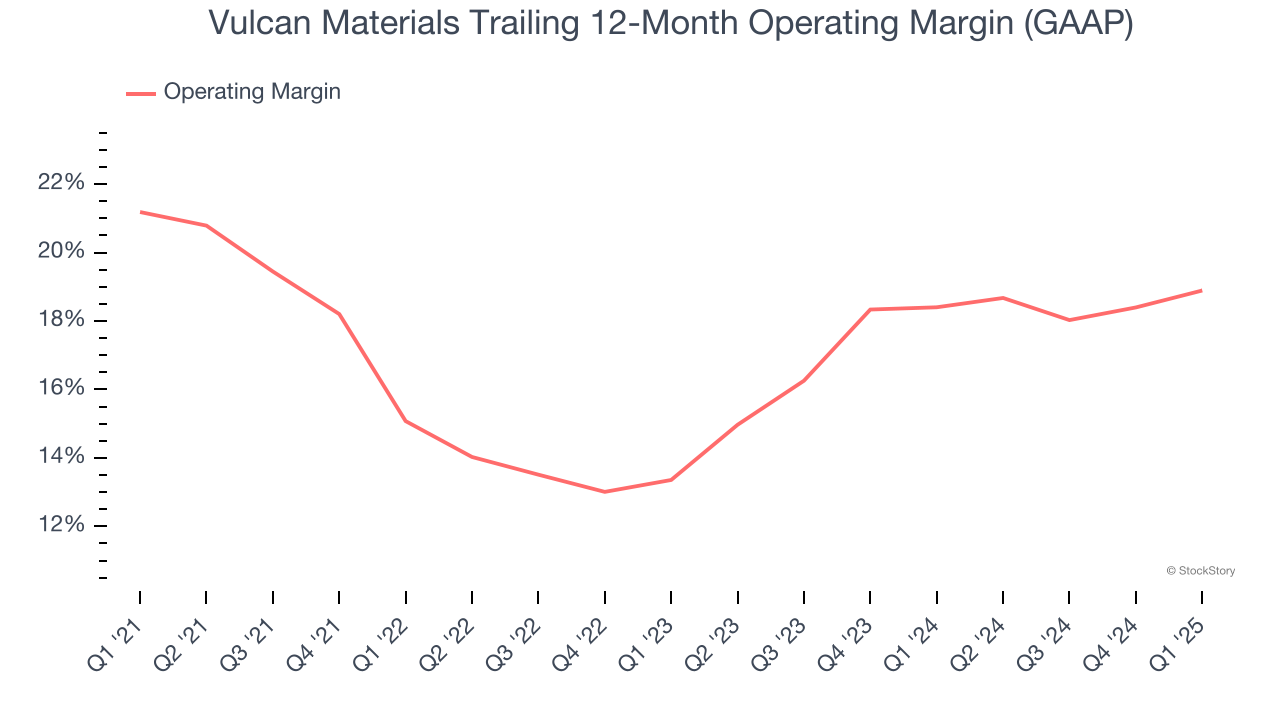
In Q1, Vulcan Materials generated an operating profit margin of 13.9%, up 2.7 percentage points year on year. The increase was encouraging, and because its operating margin rose more than its gross margin, we can infer it was more efficient with expenses such as marketing, R&D, and administrative overhead.
Earnings Per Share
We track the long-term change in earnings per share (EPS) for the same reason as long-term revenue growth. Compared to revenue, however, EPS highlights whether a company’s growth is profitable.
Vulcan Materials’s EPS grew at a solid 10.4% compounded annual growth rate over the last five years, higher than its 8.5% annualized revenue growth. However, we take this with a grain of salt because its operating margin didn’t expand and it didn’t repurchase its shares, meaning the delta came from reduced interest expenses or taxes.
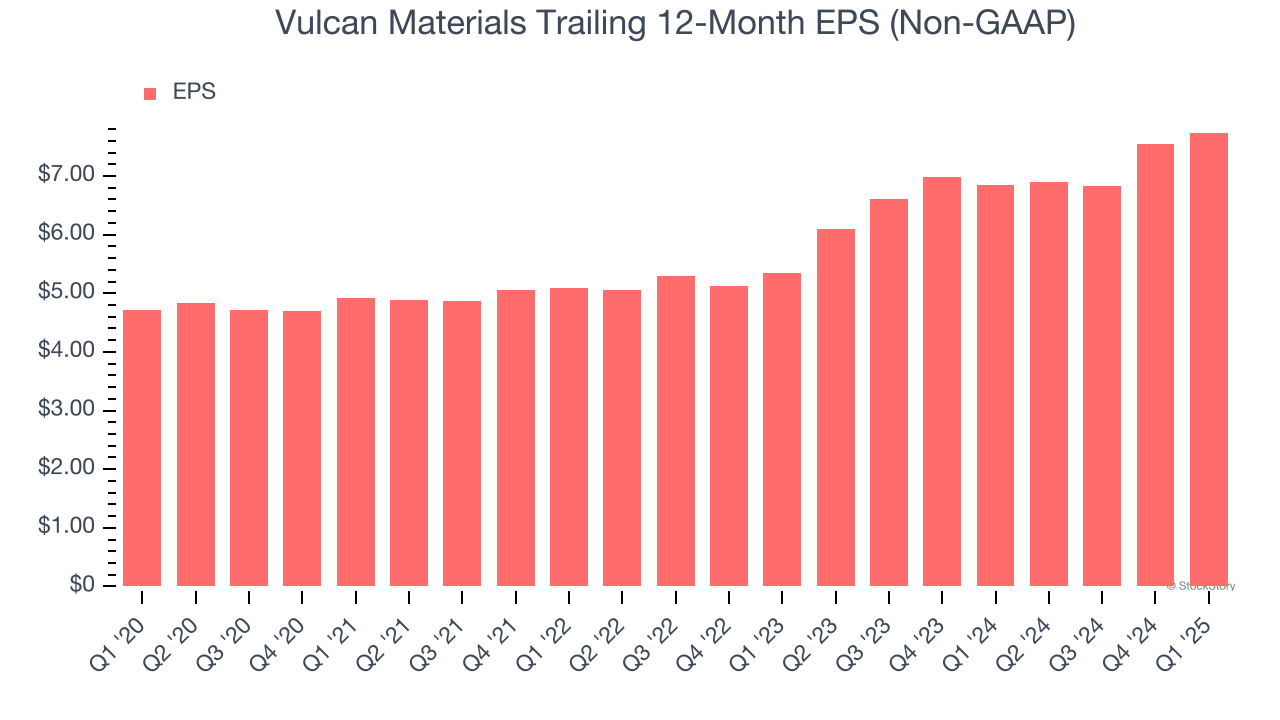
Like with revenue, we analyze EPS over a more recent period because it can provide insight into an emerging theme or development for the business.
Vulcan Materials’s two-year annual EPS growth of 20.4% was fantastic and topped its flat revenue.
In Q1, Vulcan Materials reported EPS at $1, up from $0.80 in the same quarter last year. This print easily cleared analysts’ estimates, and shareholders should be content with the results. Over the next 12 months, Wall Street expects Vulcan Materials’s full-year EPS of $7.74 to grow 8.4%.
Key Takeaways from Vulcan Materials’s Q1 Results
We were impressed by how significantly Vulcan Materials blew past analysts’ EPS expectations this quarter. We were also glad its EBITDA outperformed Wall Street’s estimates. On the other hand, its revenue missed. Looking ahead, its full-year EBITDA guidance was in line with Wall Street’s estimates. Overall, this quarter was mixed but still had some key positives. The stock traded up 3% to $252.50 immediately following the results.
Is Vulcan Materials an attractive investment opportunity right now? We think that the latest quarter is only one piece of the longer-term business quality puzzle. Quality, when combined with valuation, can help determine if the stock is a buy. We cover that in our actionable full research report which you can read here, it’s free.
